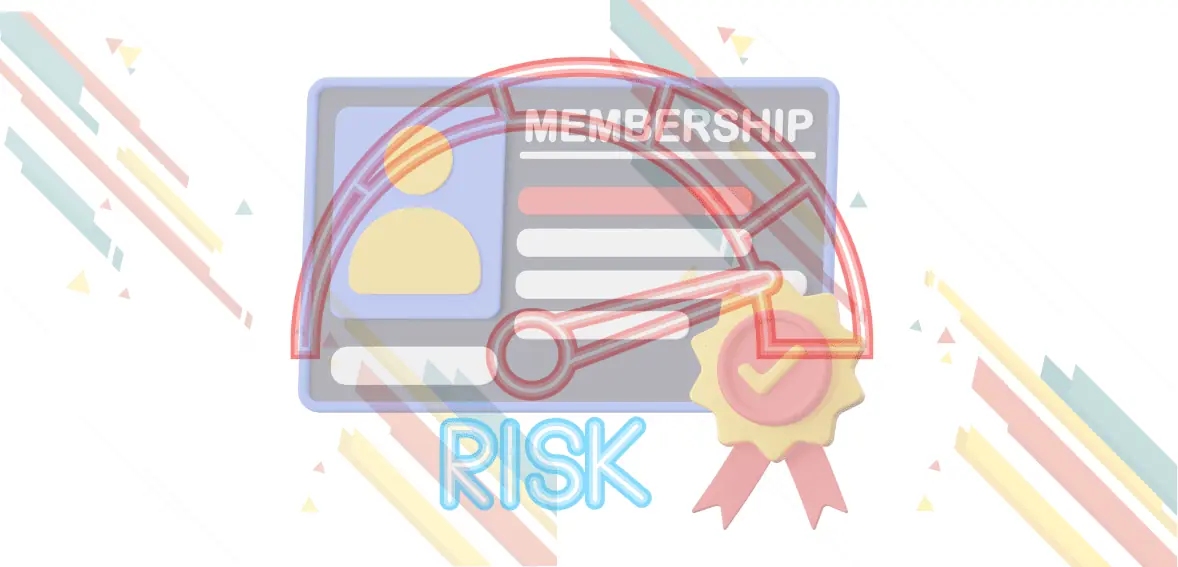If you own a business, you understand the value of having a dependable payment processing solution. Many companies consider this to be having a merchant account. A merchant account is a contract between a company and a financial institution that allows the company to accept customer credit and debit card payments.
Regrettably, not all businesses qualify for a standard merchant account. You may have difficulty obtaining a merchant account if your company is considered high-risk. But don’t be concerned! There are high-risk merchant accounts that can help you get approved in as little as 24 hours.
What Are High Risk Merchant Accounts?

A high-risk merchant account is a particular kind of merchant account created to cater to the requirements of businesses that are thought to be high-risk. Companies that sell goods or services with a higher chance of chargebacks, fraud, or other financial risks are typically referred to as high-risk businesses. This could apply to companies in various sectors, including adult entertainment, travel, supplements, and nutrition.
Traditional financial institutions like banks and credit card processors might not be eager to offer these businesses a merchant account due to the higher level of risk attached to them. It makes it challenging for these companies to accept credit and debit card payments from their clients, which may restrict their ability to expand and become profitable.
On the other hand, a high-risk merchant account is offered by a specialized financial institution prepared to handle the particular difficulties high-risk businesses face. These organizations are aware of the risks, have implemented the necessary procedures to reduce them, and offer a safe way to process payments.
High-risk businesses can accept credit and debit card payments from their clients using a high-risk merchant account, just like any other company. Businesses that frequently process card not present (CNP) transactions are typically the merchants who need this type of account. Business owners can also benefit from cutting-edge fraud protection tools, chargeback management services, and other advantages to manage their businesses more effectively and increase their revenue.
Some examples of high risk merchants include:
- Restaurants and Hospitality
- eCommerce stores and platforms
- Online retailers
- Online gambling websites
- Adult entertainment websites
- Travel agencies
- Timeshare companies
- Online dating websites
- Psychic hotlines
- Tech support services
- Online pharmacies
- Subscription-based businesses
- Multi-level marketing companies
- Debt consolidation services
- Online tobacco and e-cigarette sales
What Qualifies as a High-Risk Business?

Businesses that are classified as high-risk are those that are more likely to experience chargebacks, fraud, or other financial risks. This classification is influenced by several key factors, including:
History of Processing
The processing history of your company can reveal information about its financial health. By analyzing this data, processors gain insights into critical metrics such as chargeback and refund ratios, growth rate, and more. Institutions can even predict the trajectory of these factors with a minimum of six months of processing history.
But that’s not all; your processing history reveals your customers’ preferred payment methods. This includes the card mix, whether the cards are domestic or international, credit or debit cards, and other different payment options. It’s worth noting that some payment methods, such as international cards versus domestic ones, may be deemed riskier than others. This information is critical in a financial institution’s risk analysis of your company.
Business Sector
Your company could be labeled “high risk merchant account” because of its industry classification. The classification, known as the merchant category code, can impact a company’s standing in the eyes of traditional banks.
Specific industries, such as weapons, tobacco, and alcohol, are subject to stringent government regulations, putting them at risk. Even the jewelry industry is considered high risk due to its high average transaction value. Surprisingly, because of their cyclical revenue patterns, agriculture, construction, and accounting initiatives can also fall into this category.
Don’t be caught off guard- it’s critical to understand whether your company operates in a high-risk industry before applying for a merchant account with a traditional banking institution.”
Customer demographics
The characteristics of its customers may also influence a business classification as high risk merchant account. For instance, a company that primarily serves clients in high-risk regions or has a sizable clientele with a history of chargeback may be regarded as high risk. It might be necessary for the company to collaborate with a high risk merchant account provider in these situations.
Chargeback history on your business
Chargebacks happen when a cardholder requests that money be credited back to their card after disputing a charge with the bank that issued their card. As the merchant, this procedure may cause money to be taken out of your account and necessitate paying any related chargeback fees. Financial institutions may consider businesses with a high volume of chargebacks to be high-risk merchants and raise the alarm. This is due to the possibility of fraud or unethical business practices being indicated by many chargebacks.
A key metric to assess your merchant risk level is your chargeback ratio. The ratio is calculated by dividing the total number of processed transactions by the number of chargebacks. The actual calculation method is frequently not disclosed, leaving you in the dark about your risk level even though tier-one banks typically permit a maximum chargeback ratio of 1%.
On the other hand, the chargeback threshold may be higher for payment processors that focus on high risk merchant accounts, up to 3% in some instances. If your company’s revenue exceeds this limit, you might be required to submit a chargeback mitigation plan or be put on probation. Traditional tier-one banks, in contrast, will merely close your merchant account.
Payment processing volume
A company’s classification as high risk merchant account may also depend on how many payments it processes. Businesses that process many payments might be precarious because they are more vulnerable to financial losses. A high-risk merchant account provider may provide advanced fraud protection and chargeback management services to assist these businesses in managing their financial troubles.
Difference between High-Risk and Low-Risk Merchant Accounts
The level of risk that the financial institution is willing to accept distinguishes high-risk from low-risk merchant accounts. High-risk merchant accounts frequently carry higher fees and more stringent underwriting standards to lower the financial risk to the financial institution. In contrast, low-risk merchant accounts typically have lower prices and laxer underwriting standards.
It’s crucial to realize that a company’s classification as high-risk or low-risk does not necessarily speak to its moral character or level of excellence. Instead, it is determined by some variables, such as the business’s industry of operation, history of chargebacks, and the nature of the transactions it processes.
The proper merchant account selection is essential for businesses that are regarded as high-risk. Financial risks can be reduced with the appropriate account, and business operations can continue. On the other hand, low-risk companies have more options and frequently get better deals with lower fees.
Picking the Most Reliable High-Risk Payment Processor
Some payment processors are better than others for high-risk merchant accounts. Selecting a service provider with experience managing the specific requirements of high-risk businesses and a focus on high-risk services is critical.

It can be harmful to select a provider that merely provides a high-risk merchant account without having the knowledge and infrastructure to support it. These providers might not have credit guidelines to help your industry, which would cause a prompt account decline.
You, as a merchant, may be exposed to financial risks and other difficulties in the absence of proper underwriting and due diligence. On the other hand, a company specializing in high-risk merchant services will be prepared to help you manage these risks successfully and will have a thorough understanding of the requirements of high-risk businesses.
Before choosing one, make sure to thoroughly investigate a payment processor’s history and experience in managing high-risk merchant accounts. Verify that they are prepared to handle any difficulties that may arise and have the necessary infrastructure to support your business.
Making an informed and carefully considered choice when selecting a payment processor is crucial to your company’s success.
Selecting the Best High-Risk Merchant Account
Here are some important considerations to make when selecting the best account provider for your company:
Compare Prices Before You Buy
There are fewer financial institutions to choose from for high-risk businesses. Unfortunately, some providers exploit the limited options by charging higher processing fees. We work tirelessly to ensure that our clients receive the best market rates.
Analysis of Current Processors
If you’re already processing payments, we strongly advise you to compare your current rates with any potential high-risk merchant service providers. You can quickly determine if switching providers will save you money this way.
Requirements for Reserves
Some providers may need high-risk merchants to define a reserve in order to reduce risk. If the merchant account is terminated or closed, the processor can use this reserve account to compensate for chargeback, monetary penalty, or other fees. It is critical to determine whether your provider demands a reserve and whether the reserve must be rolling or capped.
Keep an eye out for chargeback and refund thresholds.
While high-risk providers provide more flexibility, they also have chargeback and refund ratio limits. The chargeback ratio threshold varies by the processor, but it can range from 1% for tier-one banks to it as high as 3% for providers serving high-risk companies. The maximum allowable refund ratio is 10%. Providers may choose a mitigation plan or probation period over account termination if these thresholds are exceeded.
Acceptance of International Credit Cards
Compared to domestic card payments, international card payments carry a higher risk of fraud and chargebacks. Fortunately, unlike traditional merchant accounts, high-risk accounts generally enable you to accept international debit or credit cards. If you want to grow your customer base by accepting international credit cards, ensure your service provider supports this option.
Understanding Your Merchant Contract
When evaluating your merchant agreement, consider not only the term longevity but also the terms of that term. High-risk merchant accounts typically have terms of three to five years and may include auto-renewal clauses, early termination costs, and other term-specific details.”
Instant Approval for High-Risk Merchant Accounts
Even though some providers claim to offer instant approval, their true intentions are frequently to lock you into lengthy agreements with high processing costs. It’s crucial to exercise caution and stay away from these predatory providers.
You must apply and provide supporting documentation, including a government-issued photo ID, processing statements, business bank statements, and more, to be approved for processing high-risk payments. The increased risk associated with high-risk processing is lessened by these requirements, which support the underwriting procedure.
The best strategy is to be open and truthful about your company’s financial situation. It establishes your credibility as a merchant and strengthens your bond with your account provider.
You need to Remember the processor is taking a significant risk by assuring each transaction. By accepting these actions, you can secure high-risk payment processing for your company and establish a fruitful working relationship with your provider.
How to Avoid Suspension of High-Risk Merchant Account
It can be challenging to get access to high-risk merchant processing. You should concentrate on keeping your account safe from suspension or termination to avoid going through the same laborious process again. Following the rules established by the regulatory agencies is essential for those working in sectors of the economy deemed high-risk due to governmental regulations. The following advice can assist you in safeguarding your merchant account.
Protect yourself from fraud
The integrations mentioned earlier safeguard you against fraud as well as chargebacks. By adjusting the velocity settings, ticket parameters, and limited use outside of the United States, we can increase the security of your payment gateway.
Receive chargeback alerts
We can assist you in altogether avoiding chargebacks in addition to monitoring them. Our integrations strengthen the security of your PCI payment gateway by using address verification, CVV matching, and 3D secure technology.
Pay attention to chargebacks
We provide straightforward solutions that make chargeback monitoring and resolution easier. This is the answer if you’re worried about going over the chargeback ratio cap set by your account provider.
Maintain a sound checking balance
Even if your merchant account provider demands a reserve, it’s crucial to maintain the checking account designated for your account fees in good standing. The reserve is not intended to serve as a revenue stream but as insurance.
Avoid long-term contracts
A month-to-month contract is generally the safest option for a merchant account, particularly for high risk businesses. However, it may be difficult to get a provider to agree to a month-to-month contract for a high risk business. Instead, a standard three-year contract may be offered, which may include an early termination fee. It is important to consider the longevity of the business and negotiate for a more flexible contract if necessary.
Avoid early termination fees and the dreaded liquidated damages
Early termination fees are penalties assessed to merchants who end their contract before the agreed-upon term commitment is over. These fees can range from a few hundred to thousands of dollars. Liquidated damages are an even more severe form of early termination fees, calculated based on the average monthly payment processing fees multiplied by the remaining months of the term commitment. It is important to avoid signing agreements that include liquidated damages and to have any waivers of early termination fees or liquidated damages written into the merchant services agreement rather than relying on a verbal agreement. These fees are often negotiable and may be waived during the sales negotiation process.
Don’t lease equipment
It is generally more cost-effective to purchase credit card processing equipment upfront rather than leasing it. Lease agreements often have long contracts and steep cancellation fees and may require paying a high monthly fee for equipment that could be purchased for a lower upfront cost. Some merchant account providers may offer a credit card terminal for free, but it will come with a yearly renewal fee embedded into the contract.
Watch out for hidden fees
Payment processors may charge various hidden fees on a recurring or one-off basis, which may be disclosed in the merchant service agreement. These fees can often be found in the Merchant Application section, and the Terms and Conditions section may include information on chargeback fees. It is important to be aware that some contracts may allow the processor to add additional fees not previously mentioned in the agreement.
Read the contract
This is one of the most rudimentary tips for a high risk merchant account. To ensure that merchant service agreements are fair and honest, it is important to carefully read and understand the terms of the contract. Set aside enough time to thoroughly read the agreement, possibly a few hours, and use tools such as highlighters and post-it notes to identify important or confusing terms. It may also be helpful to read a digital copy of the contract and have a physical copy to track any changes or added terms. Do not hesitate to request clarification on any uncertain points.
Conclusion
In conclusion, any business needs to have a reliable payment processing solution. Unfortunately, not all companies, particularly those deemed high-risk, are eligible for a standard merchant account. High-risk businesses have some hope, though, as specialized financial institutions provide high-risk merchant accounts to meet their needs.
These companies can accept credit and debit card payments from customers through a high-risk merchant account and take advantage of advanced fraud protection and chargeback management services. The classification of a business as high-risk can be affected by numerous variables, including processing history, industry, chargeback history, payment processing volume, and business model.
Before making a choice, it’s critical to comprehend the differences between high-risk and low-risk merchant accounts and to weigh the costs and advantages of each. High-risk businesses can confidently operate and achieve their full revenue potential with the right merchant account provider.


